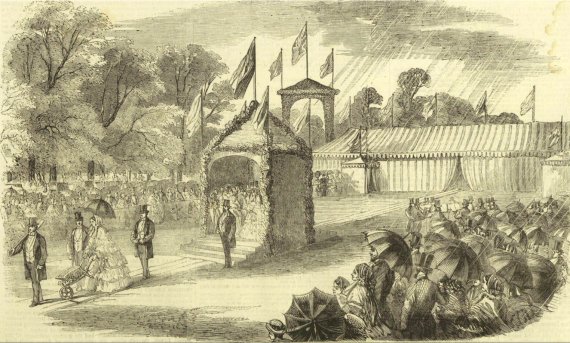the railways in yeovil
railways
The coming of the railways to Yeovil
The coming of the railways to Yeovil revolutionised the town’s transport and communication with the world beyond and changed forever its industry as new markets became viable. As early as 1847 John Batten called a public meeting to discuss rival plans for bringing the railway to the town.
The first
line to reach
Yeovil was the
Bristol and
Exeter Railway,
as a branch line
from Taunton via
Langport and
Martock. It had
a terminus at
Hendford.
Daniel Vickery
described this
tumultuous event
thus “On
Saturday,
October 1, 1853,
the Yeovil
Branch of the
Bristol and
Exeter Railway
was opened with
great ceremony.
A procession was
formed,
consisting of
the Yeovil Brass
Band; the
members of the
Yeovil Guardian
Friendly
Society, with
banners;
Sergeant-at-mace,
in full uniform;
the Portreeve
and Burgesses;
and a numerous
attendance of
the authorities
and the
tradesmen of the
town. The
Chairman and
Directors having
arrived by train
were received by
Thomas Binford
Esq., the
Portreeve, who
addressed them
in the following
words:
"Gentlemen, I am
happy to see
you. I have no
robe of office,
neither have I a
written address;
but I have
brought you that
which is far
better,
thousands of
warm hearts and
happy faces." Mr Buller, the
Chairman,
responded to
these few hearty
words of welcome
in corresponding
terms and the
Directors having
joined the
procession, all
returned, in the
order in which
they came, to
the
Mermaid Inn.
A dinner was
provided by Mr
Watts, at the
Town Hall, which
was presided
over by the
Portreeve.
Several loyal
and local toasts
were given and
responded to and
the company did
not retire (with
the exception of
the Directors,
who were
compelled to
leave earlier)
till a late
hour. And so was
inaugurated the
Bristol and
Exeter Railway
to Yeovil.
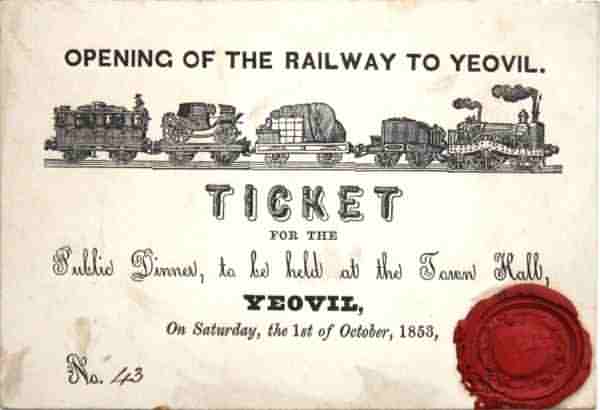
There are
omnibuses to and
from every
train. Mr
Bowles, the
attentive
Superintendent
of the Yeovil
branch, has
kindly furnished
particulars of
last year's
passenger
traffic. The
number actually
booked from
Yeovil was
29,939; but
adding free
passes the
number exceeded
30,000. There
are at present
six passenger
trains which
arrive and
depart daily,
(except Sundays,
when there are
only four,) in
addition to
several luggage
trains, a large
traffic being
now carried on
in coal, timber,
&c. The
Telegraph
Company have
also a station
from which
messages can be
transferred to
all parts of the
United Kingdom.”
(Vickery, 1856)
In 1856 the Wilts., Somerset and Weymouth line reached Pen Mill with a branch to Hendford completed the following year.
|
Commencement
of the
Central
Line
The
Illustrated
London
News
The turf was turned in a field belonging to Mr Kaines, situated at a convenient distance from the town of Gillingham. At the entrance a substantial triumphal arch had been erected, above which floated the the national colours of England, France, Sardinia and Turkey. The ceremony of turning the first turf was performed by Miss Seymour, sister of the hon. member for Poole, the Chairman of the Company. A very elegant barrow and spade were prepared for the occasion, by Mr Burt, CE. The barrow is formed of walnut; the shafts terminating in griffins' heads, and the spokes are fashioned as sheaves of corn. It bears the arms of the South-Western Company, the Salisbury and Yeovil Company, the Seymour family, of Mr Locke, and of the contractor; and the sides are of silver lattice-work. The spade, of solid silver, is beautifully engraved and ornamented, displaying the arms of the South-Western and the Salisbury and Yeovil Railway Companies on one side and on the other an inscription stating that it was presented to the Hon. Miss Seymour.
|
In 1860 the
Salisbury and
Exeter line
opened a station
at Yeovil
Junction with an
extension to
Hendford and the
new Town Station
the following
year and a goods
line connected
Yeovil Junction
with Pen Mill in
1864.
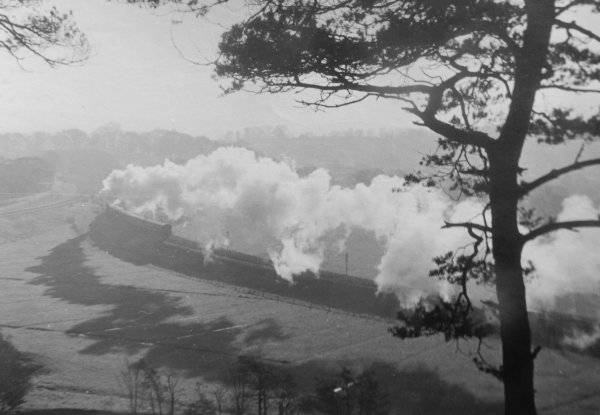
Photo by Bernard
White. Courtesy of South Somerset Heritage Collection
Photographed in the early 1950s, this is an atmospheric photograph taken towards the end of the age of steam.
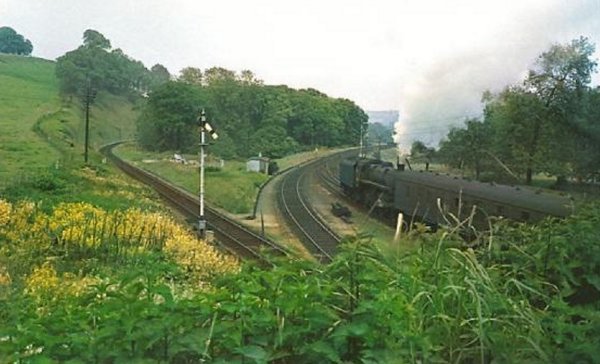
The tracks to Pen Mill and Yeovil Junction seen from Newton Road bridge (looking east).
Industrial
businesses
developed in the
area around the
Hendford railway
goods station to
such a degree
that Hendford
Halt was opened
on 2 May 1932
for passengers.
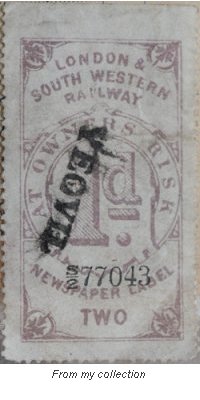 The
"Beeching Cuts" refer to
the reduction of
route network
and
restructuring of
the British
railway system
outlined in two
reports, The
Reshaping of
British Railways
(1963) and The
Development of
the Major
Railway Trunk
Routes (1965),
written by Dr
Richard Beeching
and published by
the British
Railways Board.
The first report
identified 2,363
stations and
5,000 miles
(8,000 km) of
railway line for
closure, 55% of
stations and 30%
of route miles,
with an
objective of
stemming the
large losses
being incurred
during a period
of increasing
competition from
road transport;
the second
identified a
small number of
major routes for
significant
investment.
The
"Beeching Cuts" refer to
the reduction of
route network
and
restructuring of
the British
railway system
outlined in two
reports, The
Reshaping of
British Railways
(1963) and The
Development of
the Major
Railway Trunk
Routes (1965),
written by Dr
Richard Beeching
and published by
the British
Railways Board.
The first report
identified 2,363
stations and
5,000 miles
(8,000 km) of
railway line for
closure, 55% of
stations and 30%
of route miles,
with an
objective of
stemming the
large losses
being incurred
during a period
of increasing
competition from
road transport;
the second
identified a
small number of
major routes for
significant
investment.
National protests resulted in the saving of some stations and lines, but the majority were closed as planned and Beeching's name is, even today, associated with the mass closure of railways and the loss of many local services in the period that followed. First of Yeovil's stations to go was Hendford Halt which was closed on 15 June 1964 along with the line to Taunton, then Yeovil Town station closed to passenger traffic on 3 October 1966 but freight and parcels traffic continued to use the station until 9 October 1967 when these services were also withdrawn. Long-distance trains from Pen Mill had ceased in September 1961 leaving only Yeovil Junction with a service to London. The service between Yeovil Junction and Pen Mill was also withdrawn from 5 May 1968.
The route between Yeovil Town Station and Pen Mill Station has been incorporated into the National Cycle Network and is known as Railway Walk. Much of the Taunton-Yeovil route formed the basis of the A3088 Cartgate Link, constructed in the early 1980's.
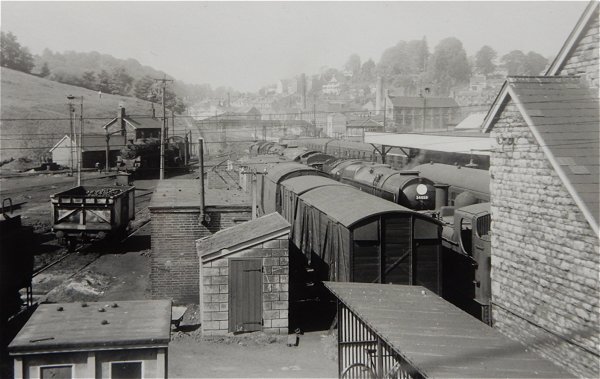
From my
collection
Yeovil Town station seen from Newton Road bridge (looking west). Photographed in 1968.
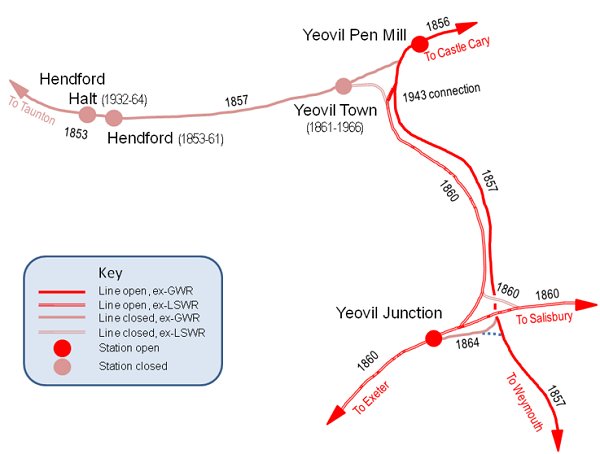
Sketch plan of
Yeovil's
somewhat complex
railway network
showing the
relative
locations of
Yeovil Town, Pen
Mill and
Junction
stations,
Hendford
terminus and
Hendford Halt.
Click on any
station name to
open its page.
See also West Country Class steam locomotive - No 34004 'Yeovil'
For Railway Accidents in Yeovil - click here
